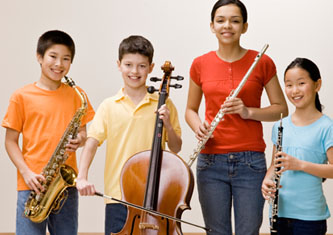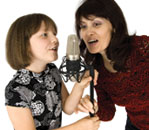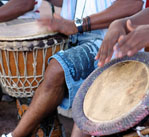 |
|
 |

Involving Families and Communities in the Arts Parents are likely the most important supporters of afterschool and expanded learning programs. After all, few activities can be more exciting to parents than seeing their child dance across a stage, sing a song, or act in a play. These public performances are equally as thrilling for the students who are eager to show their parents and family what they have learned. Involving Families and Communities is one of the practices in the arts section of the Afterschool Training Toolkit, a free, online staff development resource based on promising practices in afterschool programs. The goals of involving families and communities in the arts are to develop interest and skills; develop community resources to support ongoing arts learning; and increase understanding, enjoyment, and support of the arts. A few strategies for successfully involving families and communities include the following: involve parents in the planning process, seek out community resources, invite local artists and performers to participate, and create projects that offer opportunities for families to participate. Afterschool instructors may find that parents, like their students, respond differently to various subject areas. Parents who feel unsure about their ability to help with a science fair or to participate in a reading event because they are not native speakers of English may be more willing to create costumes for a play or help paint a mural. Connecting activities such as plays, concerts, dance performances, and art exhibits with social and cultural events within the community can also foster greater parental involvement. For example, families that have already planned on attending a street fair will be delighted to show others the drawings or paintings their children created to honor the event. Projects that focus on students and families’ cultural and ethnic heritage can also provide new opportunities for communities to engage in the arts. Students and families will learn new things about each other as students create projects based on their parents’ favorite childhood songs, dances, movies, and plays. Maybe the Macarena deserves another shot at popularity at your afterschool program. Or have students recast their parents’ favorites using today’s styles, and parents may learn a thing or two about current musical tastes. With careful planning and execution, afterschool arts activities can be fun ways to involve students’ families and the community in your program. |
The SEDL National Center for Quality Afterschool helps state education agencies and local practitioners develop high-quality programs for academic enrichment as well as youth development activities. |

| 
Art Lesson Plans:
This resource has activities for six content areas, including the
arts. Lessons are browsable by content area and grade level.
|

|
Hser Ner Moo Community and Welcome Center
|
 |
 |
 |
||||||
Community Involvement by |
|
|||||||
This e-mail was sent by: Editor: Laura Shankland
|
You are welcome to reproduce issues of AfterWords and distribute copies at no cost to recipients. Please credit SEDL as publisher. Link to PDF versions of AfterWords is available here. For additional uses, please fill out and submit a copyright request form. Copyright © 2009 by SEDL. |


